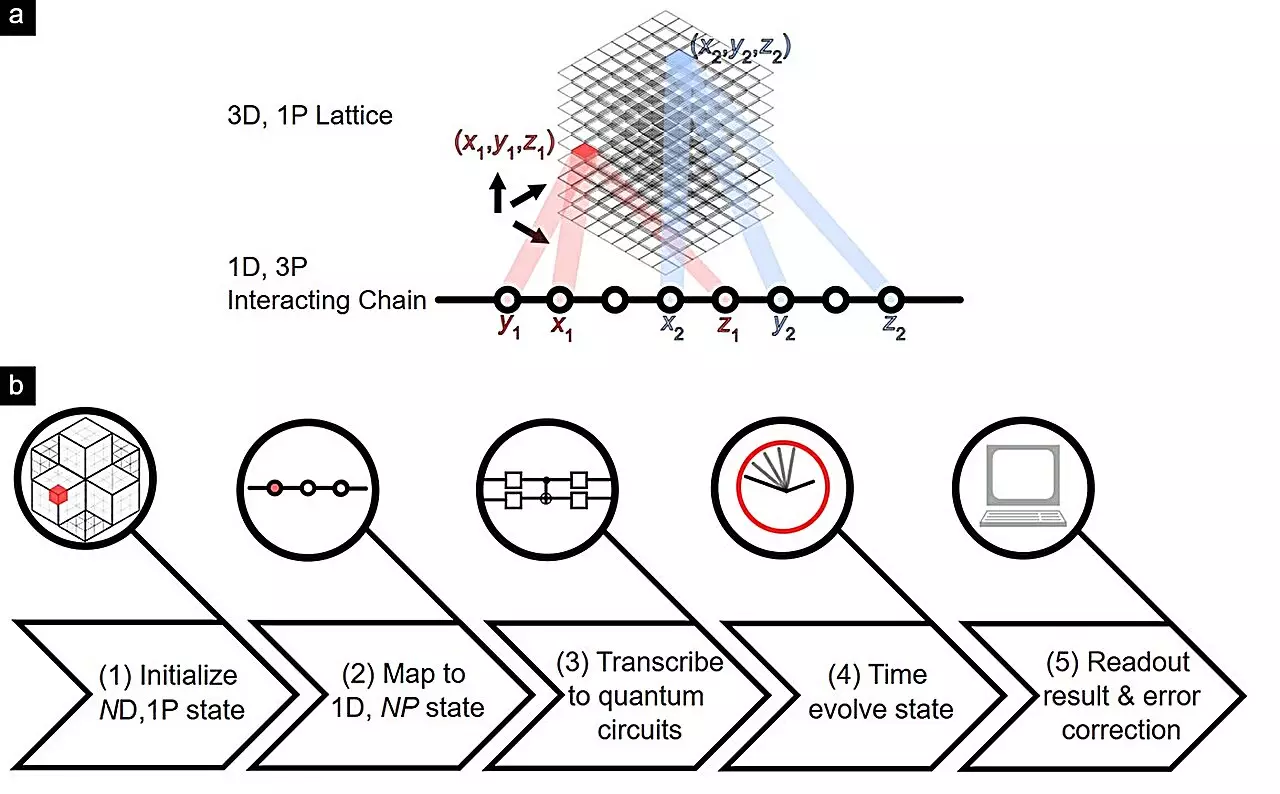Researchers at the National University of Singapore (NUS) have made a significant breakthrough in simulating higher-order topological (HOT) lattices with unparalleled precision using digital quantum computers. This advancement holds promise for understanding complex quantum materials and their robust quantum states, which are highly desirable for various technological applications.
The study of topological states of matter and their HOT counterparts has garnered significant interest among physicists and engineers. The discovery of topological insulators, which conduct electricity only on their surfaces or edges while remaining insulating in their interiors, has fueled this fervent interest. The unique mathematical properties of topology allow electrons to flow along the edges of these materials without being impeded by defects or deformations, making devices constructed from topological materials ideal for robust transport or signal transmission technology.
Led by NUS Assistant Professor Lee Ching Hua from the Department of Physics, the research team has devised a scalable method to encode large, high-dimensional HOT lattices representative of real-world topological materials using the simple spin chains present in digital quantum computers. By leveraging the vast information storage capacity of quantum computer qubits and minimizing quantum computing resource requirements in a noise-resistant manner, the team has opened up new possibilities in simulating advanced quantum materials using digital quantum computers.
The implications of this research are profound, as it paves the way for exploring the intricate signatures of topological materials on quantum computers with unprecedented precision. Even hypothetical materials existing in four dimensions can now be simulated with a level of accuracy previously unattainable. Despite the limitations of current noisy intermediate-scale quantum (NISQ) devices, the team has successfully measured topological state dynamics and protected mid-gap spectra of higher-order topological lattices thanks to advanced in-house developed error mitigation techniques. This breakthrough underscores the potential of existing quantum technology to venture into new frontiers in material engineering.
The capability to simulate high-dimensional HOT lattices using digital quantum computers opens up exciting research opportunities in quantum materials and topological states. This development suggests a potential path toward achieving true quantum advantage in the future, signaling a new era in material engineering and quantum technology. The research findings have been detailed in the journal Nature Communications, with Prof Lee emphasizing the importance of identifying novel applications where quantum computers can deliver unique advantages.
The successful simulation of complex HOT lattices using digital quantum computers marks a significant milestone in quantum material engineering, offering unprecedented precision and potential for further advancements in the field.


Leave a Reply